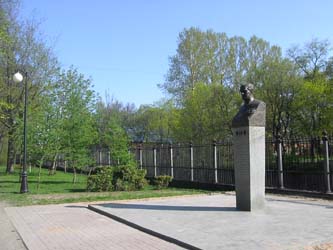The Sovetskaya street in Kronstadt.
The Sovetskaya street is one of the central streets of Kronstadt. Before the Revolution this street was known as the Catherine’s street (Ekaterininskaya), named after the Russian Empress Catherine II. Along the street there are a boulevard and a canal of the Kronstadt Admiralty. Number of interesting buildings and monuments are here.
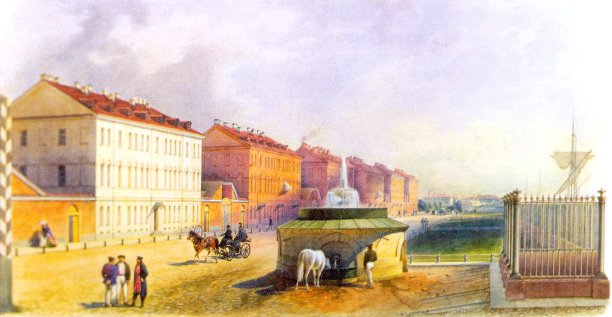 Mid 19th century
Mid 19th century
The first projects the main street along the island Kotlin appeared in the first quarter of the 18th century. But only during the reign of Catherine II active development started. The Empress had a plan to transfer the Admiralty from the center of St Petersburg after the catastrophic fire of 1783. The ambitious plan of transportation the Admiralty to Kronstadt was presented in 1785. The Mass moving of the Admiralty officers and employees the plan provided. Because of it M. Vetoshnikov, an architect, created a number of projects for the officers and employees housing. His ideas were realized and now we can see this buildings on the Sovetskaya street. It is an interesting example of the 18th century standard construction.
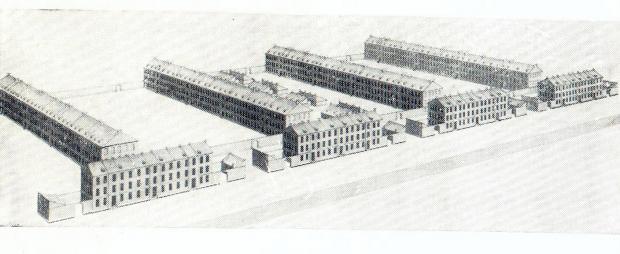
One of the officer’s bloc was reconstructed in the middle of 19th century for the Naval officer’s club. Description of the Naval officer’s club made by James T. Jane, late 19th century. “Like everything of the nature of a public building in Russia, it is architecturally very fine. It is fitted with a theatre, museum, drawing-rooms, a large dining-hall, billiard, and the usual other sorts of rooms one finds in a club; practically it is the "officers' quarters," and nearly all unmarried officers stationed at Kronstadt live here.
It is, so far as ornaments arc concerned, almost entirely furnished with gifts from the French nation on the French gifts: occasion of the Toulon affair, when the Franco-Russian alliance was cemented. One way and another these gifts to the Russian Navy from different French towns must be worth over half a million pounds ; there are numbers of huge solid silver figures of exclusive workmanship, a few of solid gold, while silk flags, jeweled ornaments, and valualjle china-ware are too numerous to be reckoned. There are rooms and rooms of them.
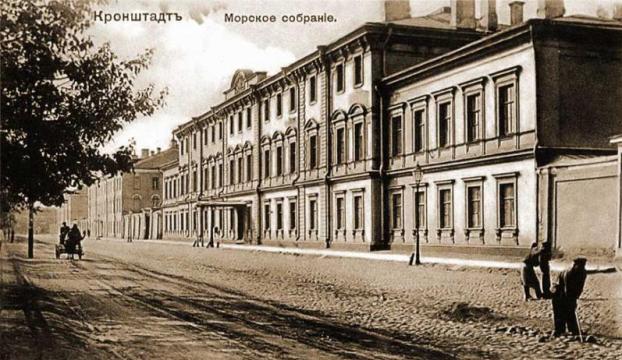 late 19th century
late 19th century
The museum is small, and of no special interest. What there is of it is chiefly geological, the balance mostly stuffed birds. There is, however, an interesting collection of harpooning instruments, chronologically arranged ; and there are a few models of ships of very early type. This place, however, is in no way on a par with the museum of our United Service Institution, which the Navy Club resembles much more than it does an ordinary club.
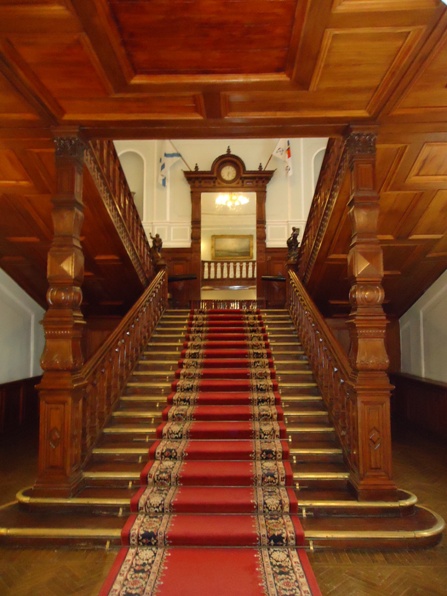
A word might bу said of the pictures. There is no pictures gallery, but the walls generally are hung with large paintings that form a very complete history of the Russian Navy from the time of Peter the Great onward and a high level of technical accuracy being maintained, these are useful as well as ornamental. The finest of these is one of the French fleet at Kronstadt — a masterpiece of bold artistic treatment. Another favorite wall-ornament is weapons. These, lethal and firearms, are arranged chronologically in devices on the walls of the vestibule and staircase. Did space permit, one could spin out a good deal about the Naval Club at Kronstadt ; but perhaps enough has been said”.
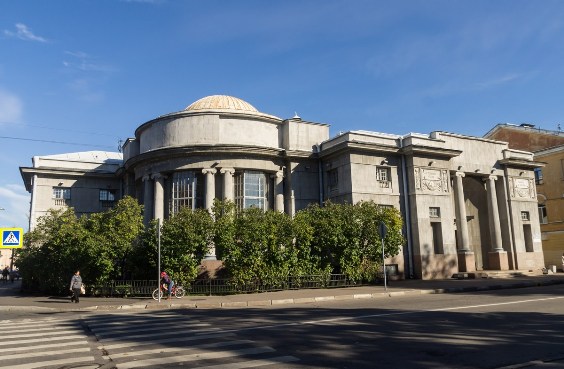 library in Kronstadt
library in Kronstadt
In the Officers' club an excellent library was collected. A special building for the library was constructed in 1927.
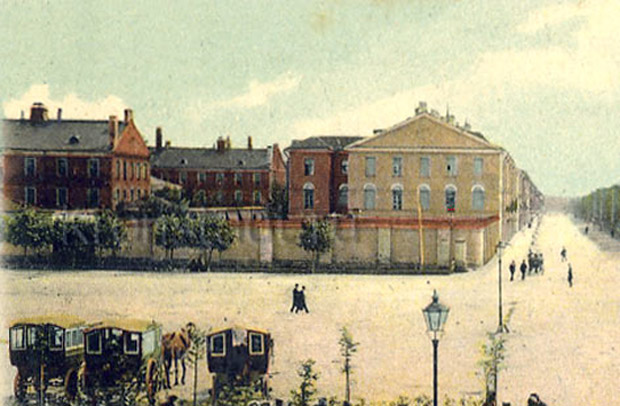
The place where the St. Andrew's Cathedral located is in the heart the city. It is the corner of the Sovetskaya street and the Lenin avenue St. John of Kronstadt was the dean of this cathedral. He is one of the most revered saints of the Russian Orthodox Church. But the St. Andrew's Cathedral was blown up in 1932.
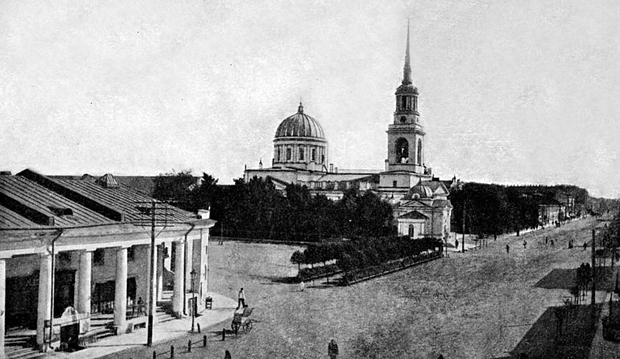
The boulevard is located along the Sovietskaya street. The boulevard was planted with trees in the middle of the 19th century. It was a place for walking only high society members: officers and wealthy merchants. Only after the Revolution this park became free to visit for all citizens.
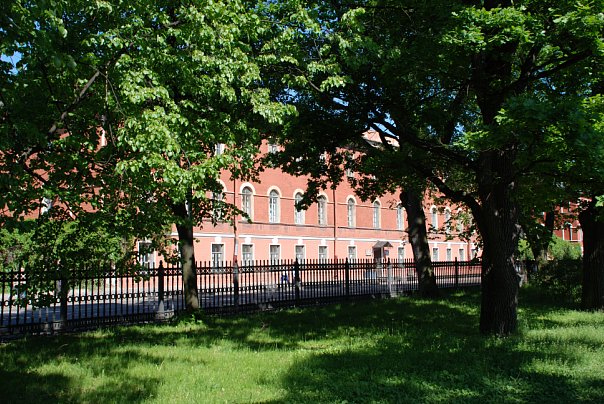
The monument to Faddey Faddeyevich Bellinsgauzen is situated here. Faddey Bellinsgauzen was a notable participant of the first Russian circumnavigation and subsequently a leader of another circumnavigation expedition, which discovered the continent of Antarctica.
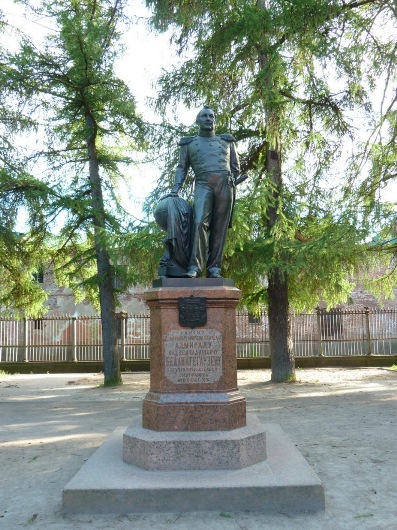
As a prominent cartographer, Bellingshausen was appointed to command the circumnavigation of the globe in 1819-1821, intended to explore the Southern Ocean and to find land in the proximity of the South Pole. The expedition was prepared by Mikhail Lazarev, who was made Bellingshausen's second-in-command and the captain of sloop Mirny, while Bellingshausen himself commanded sloop Vostok. During this expedition Bellingshausen and Lazarev became the first explorers to see the land of Antarctica on January 28, 1820 (New Style). They managed to twice circumnavigate the continent and never lost each other from view. Thus they disproved Captain Cook's assertion that it was impossible to find land in the southern ice fields. The expedition discovered and named Peter I Island, Zavodovski, Leskov and Visokoi Islands, Antarctic Peninsula and Alexander Island (Alexander Coast), and made some discoveries in the tropical waters of the Pacific.
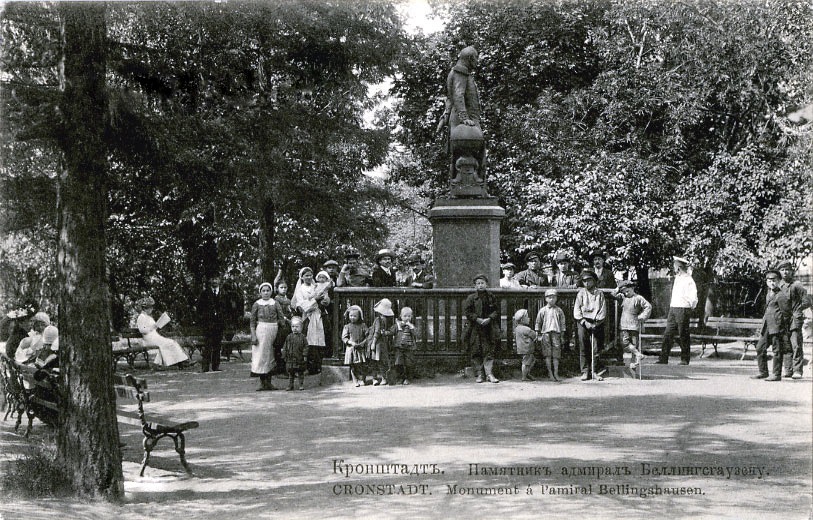
Later Faddey Bellinsgauzen became the governor of Kronstadt. Gardening and comprehensive improvement of life in the city were his main goals. Thus Bellingshausen went down in history not only as the discoverer of Antarctica, but also as an active governor. F. Bellingshausen died in 1852. He buried in Kronstadt. The monument was opened in 1870.
Kronstadt was the birthplace of Pyotr Kapitsa, co-recipient of the 1978 Nobel Prize in Physics. Monument to P. Kapitsa is located on the Sovetskaya street boulevard.
